The Goat of Affliction
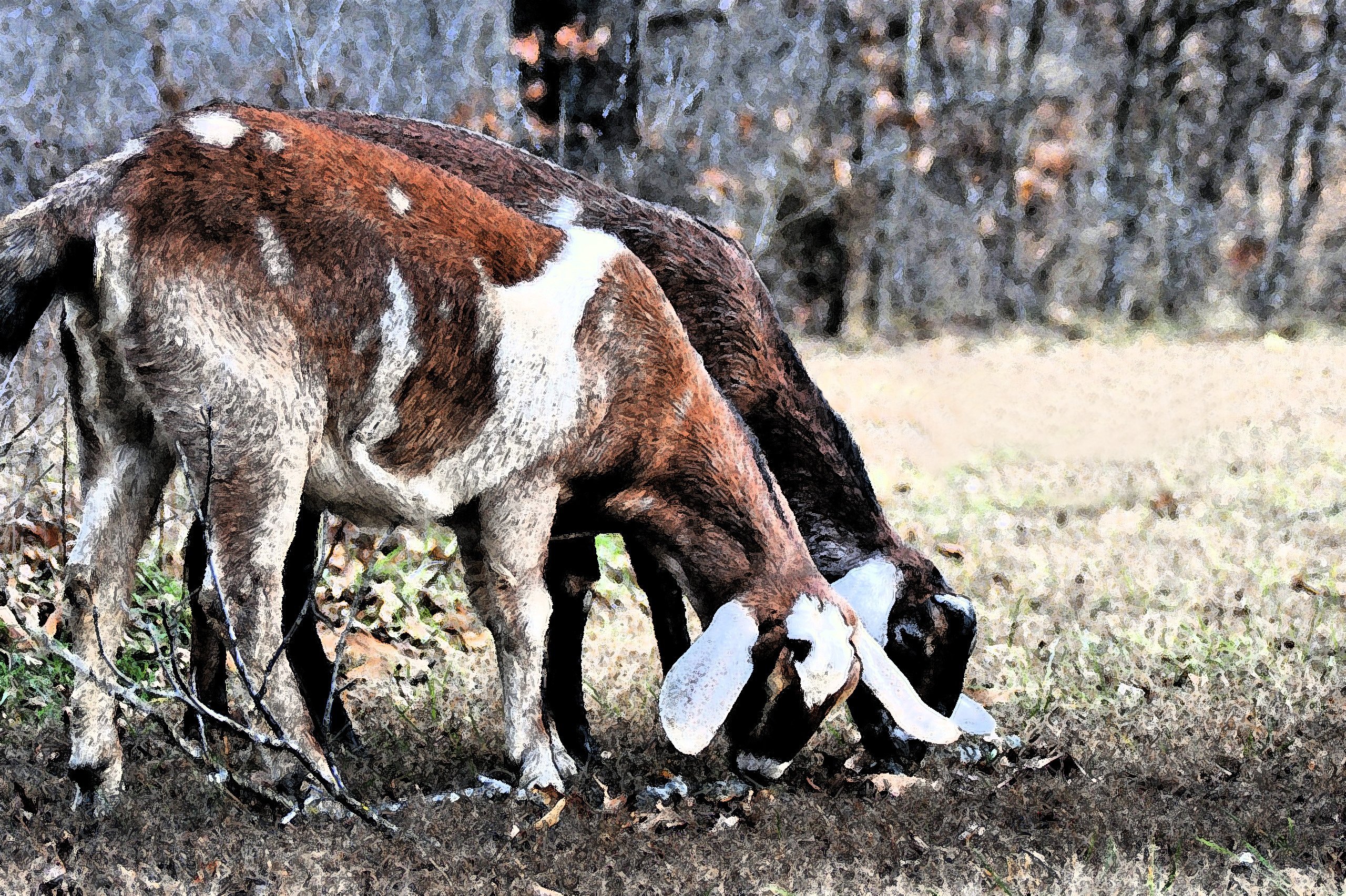
THE GOAT OF AFFLICTION
(Yom Kippur, more than we’ve been told.)
“For I have chosen him, so that he may command his children and his household after him to keep
the way of YHWH by doing righteousness and justice, so that YHWH may bring upon Abraham
what He has spoken about him.” Genesis 18:19
I can finally admit that for years I struggled with the idea that having goats would be construed as an evil inclination of mine. Being an avid reader, I regularly came across the seemingly pessimistic references made about goats in Scripture and other literary forms, much like the negative stereotyping given to pit bulls in the dog world today. I still cringe when I hear over-simplified, fixed comments like, “goats will eat anything,” “goats are unruly,” and “they’re impossible to tame.”
But the one that irritated me the most is the famous Bible verse about separating the sheep from the goats, in Matthew 25. A devoted pastoralist, and deeply spiritual, I searched for the meaning of this parable. I required an answer, and unbeknownst to me, my goats were whispering it to me all along.
Rambunctious creatures, they are. These hoofed, vocal caprines have had one of the most ancient and continuous relationships with living man and woman, providing milk and meat as food, fiber and skins for clothing, horns for musical instruments, manure as natural fertilizer, not to mention their unique and amicable nature for companionship on the trails.
I became enamored with Nubian goats and pastoral husbandry, in part from reading the Bible. It was an interest doused with curiosity, from the many mentions of it in literature. This provided a sort of gateway to the discovery of pastoralism, the classical system of herding ruminants. Pastoral goat husbandry is a life immersed in unique sounds, smells, and tactile impressions that draw one to a time that is foreign and unknown in a world drowning in technology.
“..the practice of shepherds seems to belong to a separate, archaic folk world. Their practices remain mysterious for whoever is not a shepherd or does not share time with them.”
Fred Provenza, The Art and Science of Shepherding
I am now approaching a 7-year immersion in pastoral husbandry, which equates to a life of 365 days that I spend with our Nubian herd. Cold, rain, snow or heat I am outdoors, as a good portion of my days revolve around our herd foraging for their sustenance. My daily encounters with our goats set the course for a pastoral lifestyle that continues to fascinate me. Along the way, they have attested to their intelligence, affinity for details, deep-rooted loyalty, affection, unwavering need for structure and familiarity, and a seeming disdain for human control. Sound familiar?
LINE-UP, SHEEP TO THE RIGHT, GOATS TO THE LEFT.
I’M SURE WE EACH KNOW WHICH WAY WE’RE HEADED
I began scouring the Scriptures for answers to why goats are referred to in such negative light, while the sheep seem to always be the good guys? Does being a goat herder say more about my individual character than I’m aware of? Is all of this a bad thing, I wondered? Surely there must be something good in the goat?
It was at this juncture, meandering with the herd through woodlands that the answer to this question seemed to lay right before my eyes. The revelation rooted in observations of my herd’s behavior.
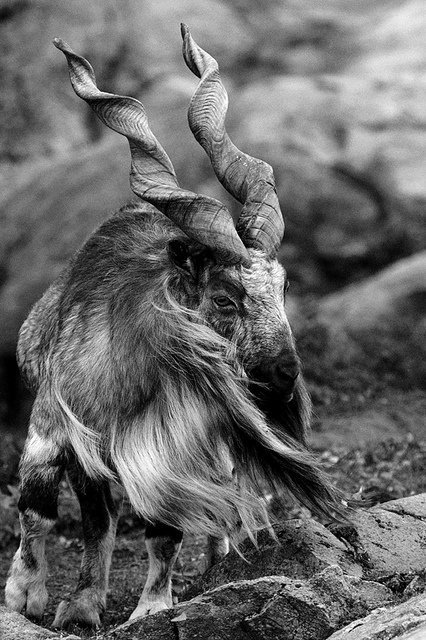
LESSER KNOWN SCRIPTURES
REVEAL A JEWEL OF A LIFE LESSON.
Here’s a quick list of a few little known, YET praiseworthy statements about goats, that we seem to lose sight of.
1. Yom Kippur’s solemn sin offering are goats. Lev. 16
2. Goats are considered stately:
“There are three things which are stately in their march, even four which are stately when they walk: The lion which is mighty among beasts and does not retreat before any, the strutting rooster, the male goat also, and a king when his army is with him.” Prov. 30:29-31
3. Isaac’s preferred game was goat cuisine prepared by Rebekah, in a savory stew. Yummm!! Genesis 27:9-10
4. Goat skins are what covered the domed tent of meeting (Exodus 26:14).
Based on Andy Hoy’s research, referenced in his books Exploring God’s House, The Exodus Tabernacle and The House of El Shaddai, Andy considers the “porpoise and badger skins” a wrong translation. His conclusion is that the tent of meeting was covered in goat skins.
5. Isaiah mentions the kingdom of the shoot that will spring forth from the stem of Jesse, that is the branch, whose roots will bear fruit… a place where the leopard will lie with the goat (Isaiah 11:6).
There are other less commendable mentions, related to goats in the Bible listed below:
6. Sadly Joseph’s tunic was soaked in the blood of goat, to deceive Jacob into believing Joseph had been killed (Genesis 31:3).1
7. There is a clear distinction made in Hebrew between the kid, a doe, and even a specific word for a goat for a not-so-nice occasion. That’s the word saiyr/satyr. A hairy, he-goat as mentioned in Isaiah 37:11. Is this a demon in animal form? Saiyr also describes a deity represented with the features of a male goat. Hence, it was known to many in occult circles as Baphomet or Pan.
In Genesis 27:11, Esau was compared to a saiyr/satyr by his brother Jacob, while Jacob referred to himself as a “smooth” man. This “smooth man” trait has been mistakenly described as Jacob being effeminate or a mama’s boy. Nothing could be further from the truth. It can actually describe a person who has an ease with words, a smooth and flattering talker. Was the reference to saiyr related to Esau’s disposition, physical attributes, spiritual character, OR does the text imply all of these?
Finally, the verse that put my hair all in a knot:
Mark 25:32-33 describes when Messiah, The Son of Man, returns, how the nations will be gathered to him, and He will separate the sheep to the right, and the goats to the left. Sheep will strut on over to the kingdom and the goats will be cast into eternal fire.
I considered, why did Yahshua choose to describe those heading to Sheol as goats? Why not as cows, horses, chickens, llamas, or a fish, for that matter? We will come back to this verse in a bit, not that those animals are devoid of any interesting characteristics. Animals have been symbols to teach us, as seen in numerous other Scriptures. However, even cows and bulls, like the goat, were cast as images of pagan deities. The tribe of Ephraim was compared to a young and unruly ox. Thus, the goat being inherently evil is not the reason for this choice of words in Matthew 25, as many oversimplify the parable with the stereotypical sheep and goats quotes.
There must be something more to this common misconception about sheep and goats in the Bible. There is!!! Stay with me on this. But first consider another probing question.
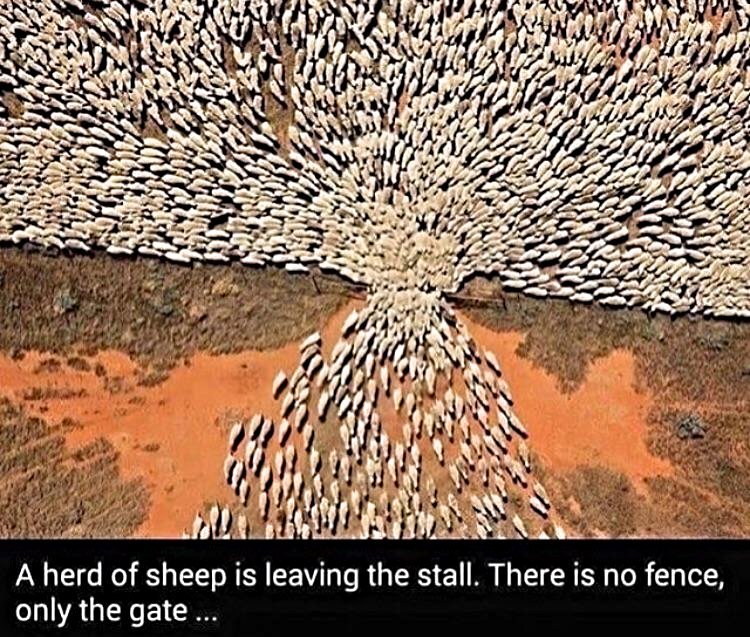
IN SCRIPTURE, DO SHEEP FARE ANY BETTER?
1. Sheep are compared to those who are wise in their own way, boast in their abundance and trust in their wealth.
“But man in his pomp will not endure;
He is like the beasts that perish.
This is the way of those who are foolish,
And of those after them who approve their words. Selah.
As sheep they are appointed for Sheol;
Death shall be their shepherd;
And the upright shall rule over them in the morning,
And their form shall be for Sheol to consume
So that they have no habitation.” Psalm 49:12-14
2. Sheep are notorious for straying… and following the wrong shepherd.
“All of us like sheep have gone astray,
Each of us has turned to his own way;
But the YHWH has caused the iniquity of us all on Him.” Isaiah 53:6
“My people have become lost sheep;
Their shepherds have led them astray.
They have made them turn aside on the mountains;
They have gone along from mountain to hill
And have forgotten their resting place.” Jer. 50:6
3. In Matthew 26:31 Yashua describes his disciples as a flock whose shepherd would be struck down and sheep scattered. A direct quote from; Zechariah 13:2
4. Sheep are described as being either lean or fat. Being a fat sheep is not a good thing in Yah’s eyes. Fat depicting these sheep habitually feed off the sustenance, hard work, resources, trust, and energy of other sheep! Like leeches.
“Therefore, thus says YHWH Elohim to them, “Behold, I, even I,
will judge between the fat sheep and the lean sheep.” Ezek. 34:20
5. Yah has plans for the fat sheep.
“For behold, I am going to raise up a shepherd in the land who will not care for the
perishing, seek the scattered, heal the broken, or sustain the one standing,
but will devour the flesh of the fat sheep and tear off their hoofs.” Zech. 11:16
I am aware of the general idea for why we are regularly compared to sheep. There is much that can be said about this topic and how it relates to false teachers, false prophets, and false shepherds today. But that’s for another discussion. Let’s now return to the discussion of why goats are the ones selected for Sheol, in Matthew 25.
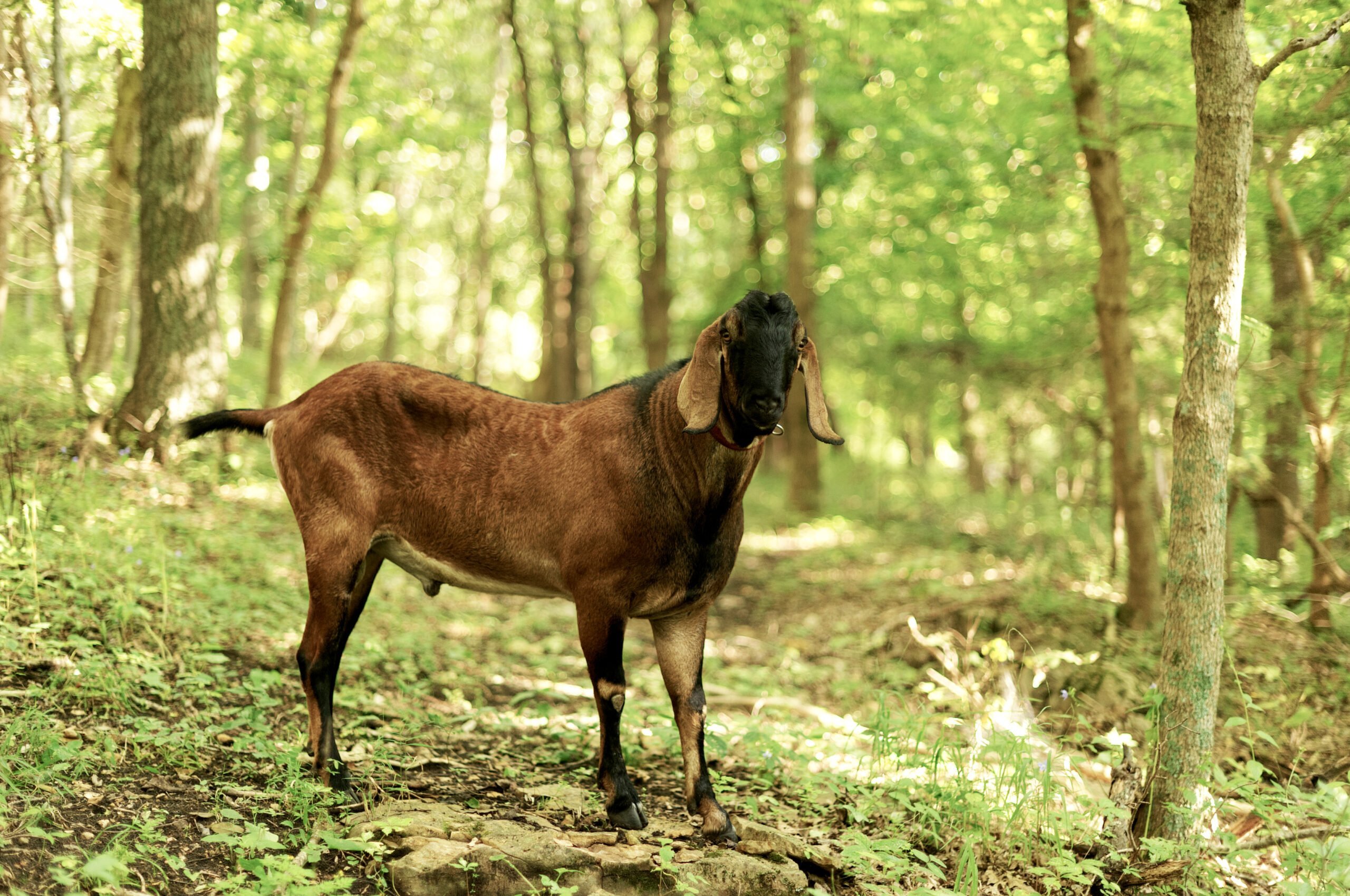
There’s a goat in each one of us, and it’s not always a bad thing.
Seasoned goat herders are well adapted to and familiar with all the nuances of caprine behavior. The conduct goats display is quite complex. These creatures are extremely perceptive, crave affection, and bloom to their optimum potential when in a well-suited goat environment. They have an incredible memory, learn fast, they’re resilient, and they possess an acute awareness and determination to exist uniquely as themselves. Sounds almost human, doesn’t it? Finally, my pastoral life came to terms with a Biblical truth that for years had perplexed me.
In training our goats with a new skill, I have observed that when they are unsure of what is expected of them, they will resort to following instructions with which they are familiar from past training. Here is one example.
There was a situation where I needed to change the entrance for the goats to enter the barn for feeding. I had already used two other entrances before. At this juncture of life on the farm, I had to temporarily use another way in. So, I called the herd, they came running, and went to the expected entry. They heard me calling, but could not get it. I could see them walking around the barn, pacing back and forth. Finally, one of our lead does went to another door she knew had been used in the past. Once again, she heard my voice, and then paced between both entrances, as she called out to me. Hearing me call her, she proceeded to approach yet another door, that in the past we had used to bring the does in for feeding. All this proved to me that she recalled the doors used in the past. The doe checked all of those locations to see if that is where I was calling her from.
Our herd and I have well developed communication in place. I’ve spent time training them this way, to facilitate herding them. Trained goats already familiar with our routine are easily managed. Most of our does will learn a new skill within 48 hours. Our herd can tell the difference between the forage times when I plan to lead them into the woods, or whether they will take themselves out and bring themselves back into the paddock.
If a goat does not align with my instructions I am aware whether that animal is still in training under new instructions, whether it is in heat (does can be drama queens), or if they are deliberately disobeying instructions they are familiar with (because they’ve followed in the past, but are choosing not to align). When pondering our goat’s behavior, it was the moment I came to understand Matthew 25.
The Matthew 25 parable of the sheep and the goats is framed in a particular context, and context is everything!
“Then the King will say to those on His right, ‘Come, you who are blessed of My Father, inherit the kingdom prepared for you from the foundation of the world. ‘For I was hungry, and you gave Me something to eat; I was thirsty, and you gave Me something to drink; I was a stranger, and you invited Me in; naked, and you clothed Me; I was sick, and you visited Me; I was in prison, and you came to Me.’ Matthew 25: 34-36
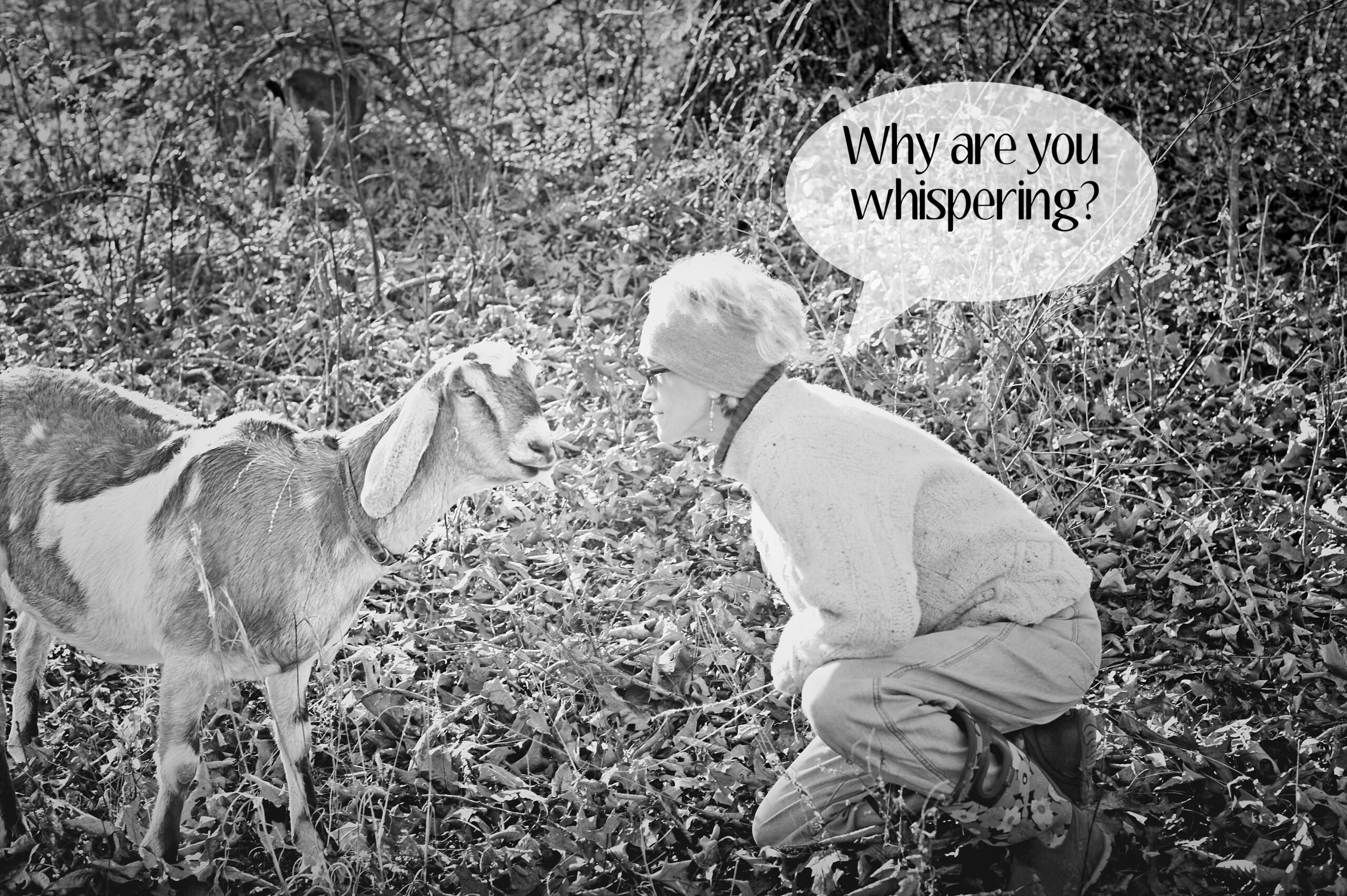
If you are not familiar with this language, it is describing the precepts of justice and righteousness, which are of supreme priority to YHWH – Genesis 18:19
- Justice and righteousness is that which Yah established His throne upon. Psalm 89:14
- Our betrothal to Yah is founded on justice and righteousness. Hosea 2:19
- Yah desires justice and righteousness more than sacrifice. Prov. 21:3
- Abraham’s seed was to execute justice and righteousness. Gen. 18:19
- Justice and righteousness is the mightier matter of the Torah. Matthew 23:23
- Pure and undefiled religion is described in the context of justice and righteousness. James 1:27
- Those who practice justice and righteousness are the children of Yah 1 John 2:29
- Israel’s shepherds were judged for not executing justice and righteousness. Ezek. 34:1
- To know Yah is to do justice and righteousness, which He delights in. Jer. 9:24
- Sodom’s sin was debauchery and not practicing justice and righteousness. Ezek. 16:49
- Justice and righteousness are the measuring line and foundation for Zion. Is. 28:17
- Yashua read a portion of the scroll of Isaiah 61:1-2 that mentions justice and righteousness.
- Yah describes a true fast with the language of justice and righteousness. Is. 58: 5-10
This is just a cursory list. There are numerous verses demonstrating this fact! Justice and righteousness are foundational principles that can be traced from Genesis to Revelation. Yet there is more.
Taking the Matthew 25 sheep and goats text back to the Greek, the context solidifies, and is the crux of the matter. Matthew 25:32-33, uses two Greek words to describe each of the animals mentioned.
—G4263 probaton, a neuter noun
definition of probaton = any four-footed, tame animal accustomed to graze, small cattle (opp. to large cattle, horses, etc.), most commonly a sheep or a goat
prob’-at-on; neuter of a presumed derivative of G4260; something that walks forward (a quadruped), i.e. (specially), a sheep (literally or figuratively):—sheep(-fold).
—However, G4263 is derived from G4260 = probaino
definition of probaino = to go forward, go on, to walk forward, i.e. advance (literally, or in years):—+ be of a great age, go farther (on)
The English word probation is clearly seen in this Greek word, and the meaning is identical in the Greek as it is in the English. Probation is a process or period of testing. Thus, the sheep advanced toward the Kingdom of Yah, because they passed probation.
Let us look at the word for goat in the Greek.
—G2046 = eriphos, masculine noun, simply describing a kid, a young goat
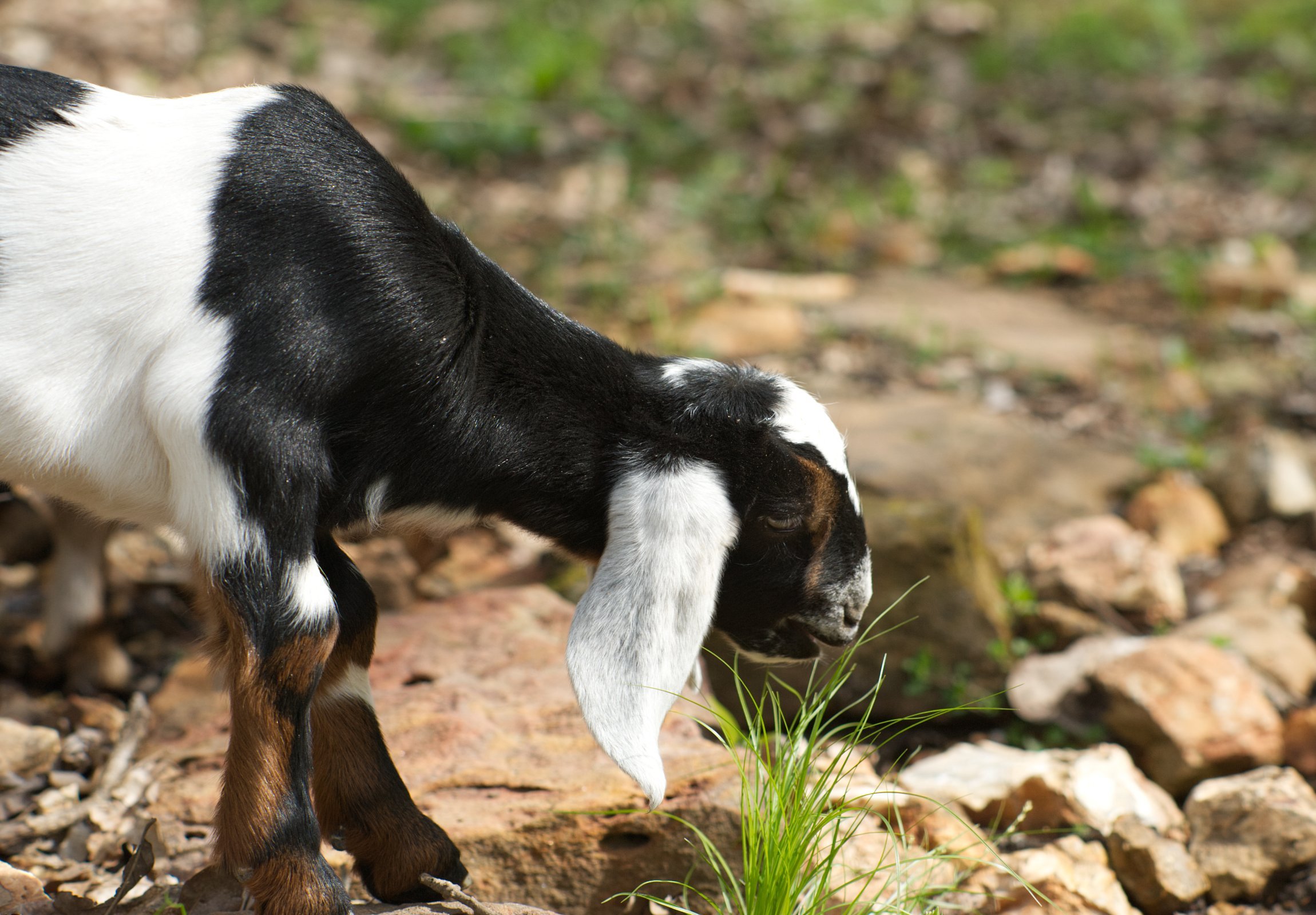
The Matthew 25 goat is not an adult goat, but clearly a kid, a goatling. Bingo! From a goat herder’s perspective this choice of words paints a very different picture. When working with our herd, my expectations of the kids is not at the level of what I expect from the adult goats. Yet, I rely on the adult goats to help train the kids. That is why I leave very little room for bad goat behavior among the adults, because I know the kids are watching, and are quick to mimic what their adult counterparts do.
Yahshua’s preference to compare us to either sheep or to goats is really a lesson in choices. There is one who is mature and advances forward, passing probation, contrasted with the immature goatling that is self-absorbed. These varying degrees of maturity are to be viewed in the light of the One we are to emulate, who also becomes the One we inflict our transgressions upon when we choose to obfuscate the matter of justice and righteousness.
The sheep are praised because they executed justice and righteousness, without realizing they had done so, and having carried out the task as unto the King Himself. It was in their nature to have compassion, to care for the less fortunate and the oppressed, and they did as such, not to be recognized, rewarded by men, or expecting to secure a handy tax write-off from a 501c3. Although sheep are notorious for being easily led astray (recall that the Scripture I shared demonstrates this), they wholeheartedly and easily follow those they come to trust and admire, at times doing so obsessively and being taken advantage of. But not all sheep display bad sheep behavior.
The good sheep in this Scripture are those who have the fruit in their lives likened to individuals who have not gone astray following after false leaders, bad shepherds, and false teachers in this world. Instead they chose to follow after the Shepherd of Shepherds. They manifest justice and righteousness towards the less fortunate and the oppressed, and they are not living on or getting fat off their fellow sheep like the Torah warns against. Justice and righteousness, is described by James as the principle of true religion. Positive sheep behavior = to have an acute familiarity with The True Shepherd, and unwavering fidelity to only follow The Good Shepherd.

Having negative goat behavior represents the side of human nature that, in spite of knowing what to do and having an understanding of what the Good Shepherd desires of them—such as doing acts of justice and righteousness—these goats chose not to. They act like kids, lacking concern, humanitarianism, and compassion for their fellow man in need, oblivious to the weightier matters. But not all goats display bad goat behavior.
The goat is intuitive and fiercely independent, daring to scale the most dangerous of heights. Its decision to transgress, not follow instructions, comes not from an untamable or ignorant trait, but from one of disdain for an authority presenting itself, whom it does not respect or find advantageous. When a goat submits, it’s because it values a relationship with you.
However, when it chooses not to abide by established norms of which it is well aware and may even have cooperated with before, this is the moment the goat becomes the willing and conscious transgressor.
Positive goat behavior = to be of admirable intelligence, loyal to a tried and true Leader. Having a fierce determination and cleverness that results in a weightier consequence for choices made.
To those on the left, He separates for perdition, and everlasting destruction— a judgement for not doing what was in plain sight for them to do.
What was the issue that Yahshua said, “What you did to the least of these, you did unto Me.” The issue was and still is, the matter of executing justice and righteousness or the lack thereof.
This Yom Kippur’s season of repentance, consider how many spend time alone, fasting and “afflicting their soul,” as is so common for this solemn day, yet hardly touching on the weightier matters—the precepts for this affliction. It is Matthew 25 that leads one back to Isaiah 58:5-10, clarifying that affliction is not a fast, for a fast Yah never asked for. Instead, it is an act of humbling oneself. A process that involves executing justice and righteousness.
“Is this not the fast which I choose,
To loosen the bonds of wickedness,
To undo the bands of the yoke,
And to let the oppressed go free
And break every yoke?(6)
Is it not to divide your bread with the hungry
And bring the homeless poor into the house;
When you see the naked, to cover him;
And not to hide yourself from your own flesh?(7)
….And if you give yourself to the hungry
And satisfy the desire of the afflicted,
Then your light will rise in darkness
And your gloom will become like midday.(10)
_________
With the time I have been given, I will account for my choices, in portraying the worst or the best of the sheep and the goat. This Yom Kippur, I offer up that goaty side of me. My goat of affliction—the part that prevents me from advancing forward in doing as unto my King, what I know I am to do…
That is to humble myself and execute justice and righteousness.
_________
About Daisy
Daisy is an accomplished photographer, website and business branding designer. When not designing, her days are spent herding the family dairy goats through woodlands and prairies of the Midwest, where she lives. Oh, also making and drinking kefir! An avid goaty, her latest pursuit is engaged in the research and restoration of pastoral goat husbandry, via blogging, online coaching, the website www.goatyourland.com and the growing international Goat Your Land Facebook group. Her studies in the Scriptures inspired the rediscovery and restoration of classical pastoral husbandry as their primary mode of herd management.